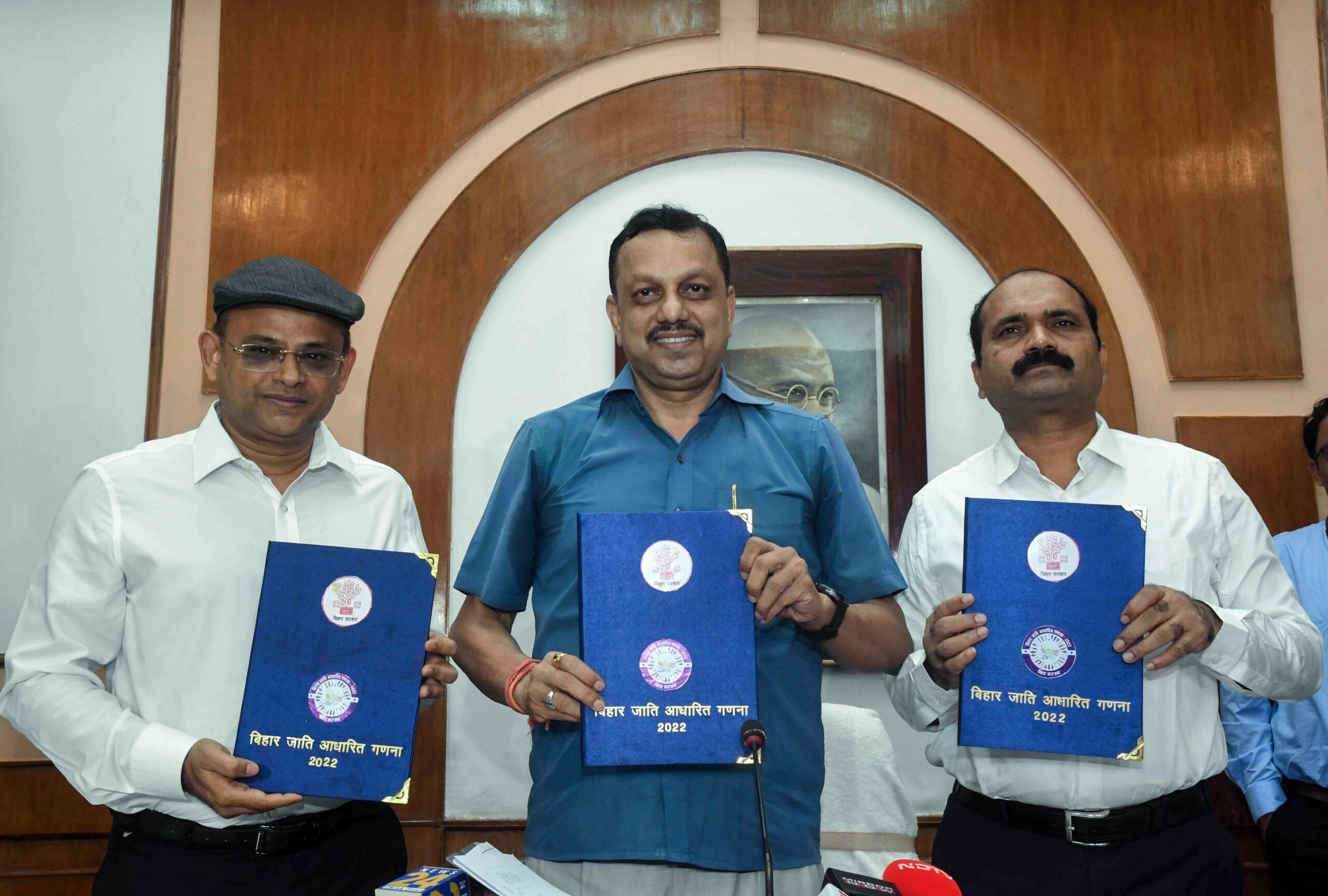
The Bihar government on Monday released the findings of a caste survey conducted earlier this year.
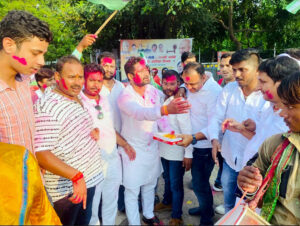
JDU supporters celebrate after Bihar government releases the caste-based census report, in Patna on Monday.
The survey has, over the past several months, become a lightning rod of sorts for political parties in the state; it has become the central focus of the Opposition’s I.N.D.I.A bloc, which has raised the issue of the other backward classes (OBCs) in the run-up to the 2024 general elections.
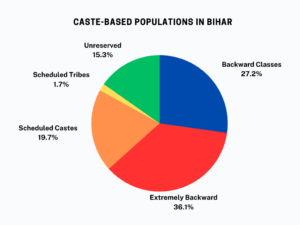
Bihar has become the first state to release data from a caste-based survey. The report indicates 36 percent of the population belongs to Extremely Backward Classes, 27.1 percent are Backward Classes, 19.7 percent are Scheduled Castes and 1.7 percent are Scheduled Tribes. The general population is 15.5 percent. For perspective, the state’s total population is over 13.1 crore.
Leaders of the Congress party, particularly Rahul Gandhi, have also called for a nationwide caste census. Gandhi has also criticised Prime Minister Narendra Modi’s government for excluding OBCs from the Women’s Reservation law passed by the Parliament last month. While the demand for a national-level census is old, it has picked up traction over the past year ahead of the upcoming Lok Saba elections. Although the Opposition has continued to press the Centre for a national caste-based survey or headcount—which has also been announced as a key demand of the I.N.D.I.A bloc—there are currently also divisions within the group on this count after the Trinamool Congress raised certain objections.
Last year, the Nitish government had allocated Rs 500 crore for the exercise and had set February 2023 as the deadline, but the exercise began with a delay in January and the findings have therefore come nine months after the original envisioned timeframe.
WATERSHED MOMENT OR EYEWASH?
Minutes after the data was released Chief Minister Nitish Kumar posted on X (formerly Twitter) to hail the release of data on Gandhi Jayanti. “Soon a meeting of the nine parties in the Bihar Assembly (including the Deputy Chief Minister’s Rashtriya Janata Dal and allies-turned-rivals BJP) will be called regarding caste-based census in Bihar. They will be informed about the results…” Kumar said. The Chief Minister’s Janata Dal (United) said the Bihar government had “created history”. Tejashwi Yadav called the report a “watershed” moment and the result of “decades of struggle”. “Now both the policies and intentions of the government will respect (this) data…” he said.
Yadav’s father and party boss Lalu Prasad Yadav also hailed the release on Gandhi Jayanti and said, “Despite many conspiracies of the BJP, legal hurdles and all the conspiracies, today Bihar government released caste-based survey (data).” The reaction from some members of the Bharatiya Janata Party (BJP), on the other hand, has been critical. Union Minister and Lok Sabha MP Giriraj Singh slammed the caste-based survey report as “eyewash”. However, Samrat Choudhary, the party’s state chief, said “BJP had given full support to this survey” and claimed work on it had begun back when it was still allied with the JDU. “We will give an official response only after studying the methodology and mechanism followed in the survey.”
On increasing OBC quotas—as per survey data—he said, “Babasaheb Ambedkar had introduced this provision… then Mandal Commission, Rohini Commission. Prime Minister Narendra Modi has consistently ensured various findings are studied. Government will take action required.”
In August, after the exercise was completed, the Chief Minister stated that the survey would be “beneficial for all” and “enable the development of various sections of society, including the deprived”.
During the same month, when pressed regarding opposition from certain political parties for the caste-based headcount, the Chief Minister said the exercise had been ordered with the support of all state parties. This cross-party support, he indicated then, included the BJP.
THE NUMBERS
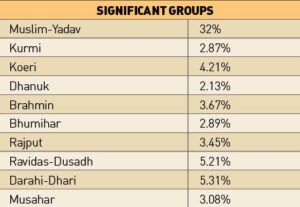
The report’s fallout—which will almost certainly spark a political row—will likely also include calls to increase quotas for OBCs, which is capped now at 27 percent. According to the data—released months before the 2024 Lok Sabha election, they are now 63.1 percent of the state, marking an over 10 percent jump from their estimated numbers in the 1931 caste census. The other big number is of the Scheduled Castes, at 19.65%. The last count of the SCs, in the 2011 Census, put their number at 16% of the state’s population.
“The Mandal Commission had estimated the OBC population at 52 percent…The NSSO (National Sample Survey Organisation) surveys have provided different estimates between 1999 and 2007, varying from about 36 percent to 45 percent for OBCs…The UDISE+ (United District Information System for Education Plus) data show OBC children comprise 45 percent students in primary schools,” said the report. The “caste politics” of the Mandal-associated parties and calls for caste surveys are also meant to counter the BJP’s so-called “religion politics”. Around the time the Mandal report came out that led to the reservation for the OBCs, the BJP and the broader Sangh Parivar of the Hindutva ecosystem had mounted the Ram Mandir movement. Together, the two sociopolitical currents were called the “Mandal-Kamandal” politics — “Kamandal” being a reference to Hindutva politics as kamandal is a traditional water-pot carried by Hindu sages.
Now, not only does the report underline the numerical superiority and electoral influence OBCs wield in the state, but it has also brought to light the divisions of sub-groups and categories across Bihar. For example, the Yadav community—the group that Deputy Chief Minister Tejashwi Yadav belongs to—is the largest sub-group, accounting for 14.27 percent of all OBC categories. Additionally, the Kushwaha and Kurmi communities make up 4.27 percent and 2.87 percent of the total population; Chief Minister Nitish Kumar belongs to the Kurmi group.
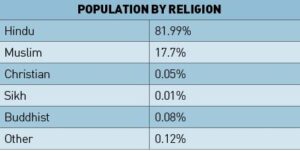
As for religion, Hindus comprise 81.99 percent of the population, Muslims 17.7 percent, Christians 0.05 percent, Sikhs 0.01 percent, Buddhists 0.08 percent and other religions 0.12 percent.
POLITICALLY SPEAKING
Socialist parties such as the ruling Rashtriya Janata Dal (RJD) and JD(U) are likely to push for an increased quota not only for the OBCs but also the EBCs. The RJD-JD(U) alliance will also be expected to plan EBC-centric policies and programmes. State politics will also gravitate around EBCs, which otherwise have no one unanimously recognised leader and are split between parties. Mukesh Sahani, who heads the Vikassheel Insaan Party, for example, is identified as at best a Mallah leader. As such, parties long recognised the worth of EBCs as floating voters.
CM Nitish Kumar does not have the backing of a significant social group either and has nursed a Mahadalit constituency (comprising 21 SC groups, minus Paswan). The JD(U) supremo now has more cause to focus on the segment, hoping to beat the BJP and Congress in the tussle for the Dalit vote.
The caste survey has cemented the Yadavs as the single largest group, at 14.26 percent of the population. With the Muslim population percentage counted at 17.7, Lalu Prasad’s core Muslim-Yadav (MY) constituency stands at over 32 percent. This emphasises the MY group as the one to beat, with Nitish’s core constituency of the OBC Kurmi and Koeri group (Luv and Kush) at 2.87 and 4.21 percent respectively. If EBC Dhanuk (2.13 percent) are clubbed with this, his 10 percent loyal vote bank still falls significantly short.
With the caste survey putting the general category, or “upper castes”, at 15.52 percent—only slightly higher than expected—there have been no great surprises for the BJP, which commands their loyalty. Of the upper castes, the Brahmins are at 3.67 percent, followed closely by the Rajputs at 3.45 percent and the Bhumihars at 2.89 percent. What the BJP will be looking at more closely are the EBC numbers, and this is set to impact the party’s campaign for Lok Sabha.
Among the SCs, Ravidas and Dusadh (Paswan), with allied castes of Darahi and Dhari, are almost evenly matched, with respective populations of 5.21 and 5.31 percent. While Paswan leader Chirag Paswan will take heart from the data, former CM Jitan Ram Manjhi now has a number to his Mushahar clout: 3.08 percent.
The release of this data comes as the Supreme Court continues to hear petitions challenging a Patna High Court’s judgment order that called the exercise “perfectly valid”. The court had refused an interim stay unless critics made out a prima facie case. The decision to conduct a caste survey was taken by the Bihar government in June last year, amid opposition from various political parties. CM Nitish Kumar maintained that the state would not be conducting a “caste census” but only be collecting information related to people’s economic status and castes so that the government could “serve them better.”